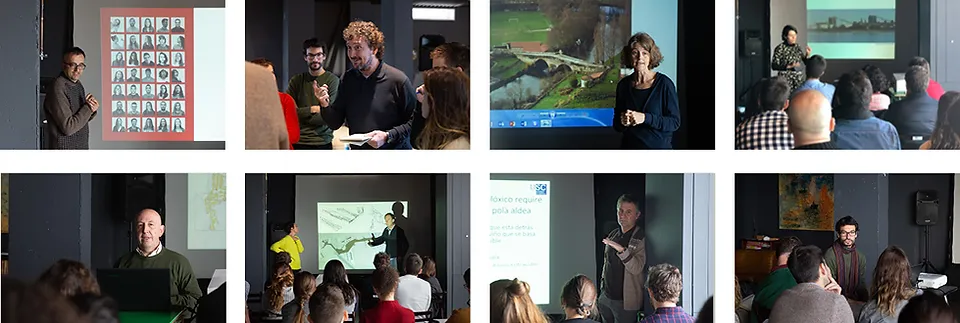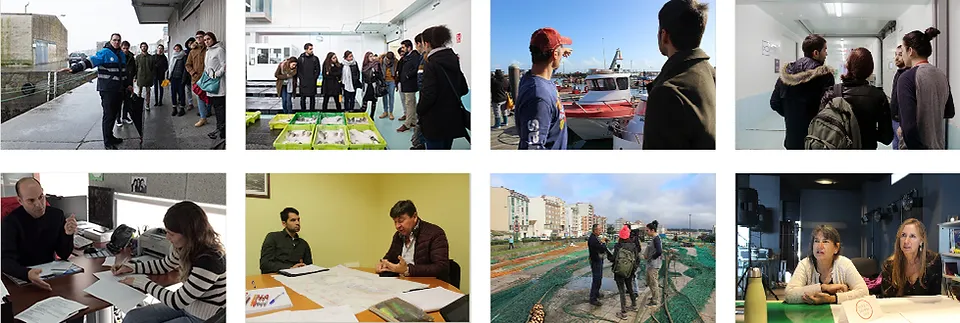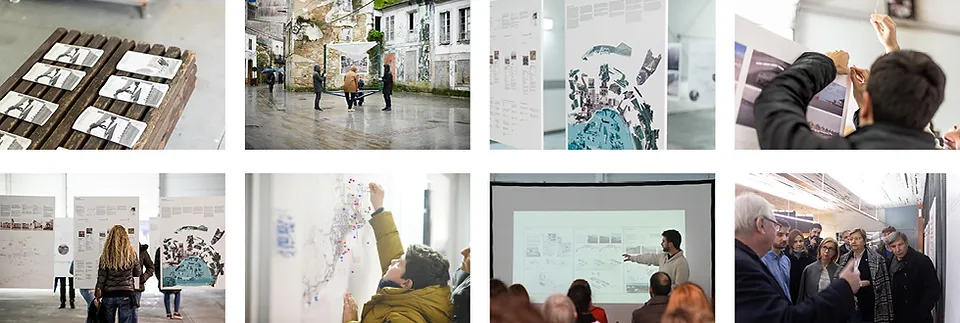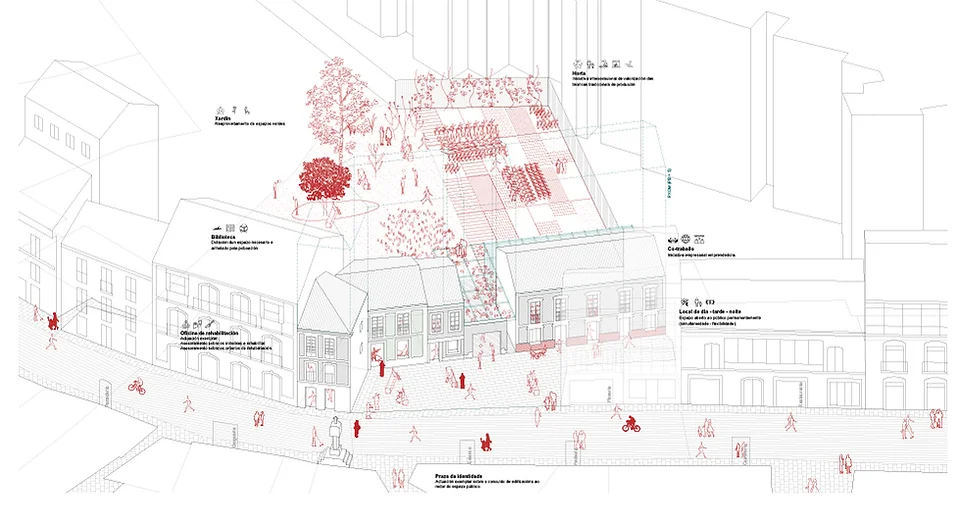Workshops: Analysis of the urban nucleus of Santa Uxía de Ribeira
Workshops are tools for analysis and participatory creation that allow the generation of knowledge and ideas to assist the competent authorities in decision making. Through these workshops, the local community can take a proactive role in the planning process.

The objective of the workshop is to open a reflective process to different approaches, sensitivities and areas of knowledge. With this intention, a selective process is opened in universities of different areas of the Iberian Peninsula, selecting 15 participants from 4 different universities that constitute the research team.
The approach of the workshop is to demonstrate the importance of social capillarity as an analysis tool for a local roadmap.
For 4 weeks, the members of the workshop are at the service of the citizens of Ribeira so that, with the active participation of the local population and with the help of invited experts, conflicts and opportunities are identified, classified into three major local challenges: the urban integration of ports, the abandonment of heritage in urban centers and the enhancement of peri-urban areas. As a result, a roadmap is drawn up with actions to be developed in the short, medium and long term for the urban regeneration of the locality.
The workshops serve to incorporate visions of the territory from different places, disciplines and sensibilities. To promote this exchange of knowledge, we combine our own research with the contributions of local representatives, professionals and academics through conferences, working sessions, interviews and visits.
Year
2018
Promoter
Fundación RIA
Location
Ribeira, A Coruña
Team and collaborators
Fundación RIA
Escola Tècnica Superior d'Arquitectura de Barcelona
Escola Técnica Superior de Arquitectura da Coruña
Diagnosis
As an approach, an organized analysis is carried out according to the previously identified themes, for which the participants are suggested to delimit them according to their own criteria.
This exercise, in which participants are organized into three groups, aims to question the tightness of the areas of study, as well as to find elements and dynamics that are transversal to these three themes and to their a priori considered delimitations.

The analysis of the maritime edge requires both a complete understanding of the dynamics governing port activity and facilities and that of the surrounding urban fabric and the synergies between the two. The observation of the urban core focuses on the abandonment of buildings with identity value, but also analyzes the commercial activity and the use made of public space, as well as its design and the impact that traffic has on it. Finally, the analysis of the outer boundary of the core, referred to as the green edge, addresses issues as diverse as the presence of pre-existing agricultural structures or the ecological value of this area.

Roadmap and model projects
The diagnostic work developed by the team of architects allows the identification of areas of special interest, areas of friction between the three bands analyzed, where conflicts and opportunities of each of them converge. In order to clarify the general strategies and define a unitary project that would braid the three bands, the definition of a logical framework is addressed.
Based on the conflicts and opportunities detected, specific actions are designed to solve the conflict or exploit the different opportunities. The actions proposed need not only be physical interventions, but also include festive, cultural, social, etc. actions. The resulting multitude of actions are grouped into small groups according to the specific objective they pursue.

The specific objectives are grouped into a smaller set of general objectives that define broad strategic lines, serving as principles with which to approach the urban regeneration process. The resulting logical framework was revised from the broadest to the most specific and vice versa, to eliminate actions that would be difficult to implement, or to regroup objectives within the large blocks.
Finally, the general objectives are identified with three higher themes that are the three layers that constitute the unitary project of urban improvement proposed for Santa Uxía de Ribeira: identity, public spaces and uses and equipment.


